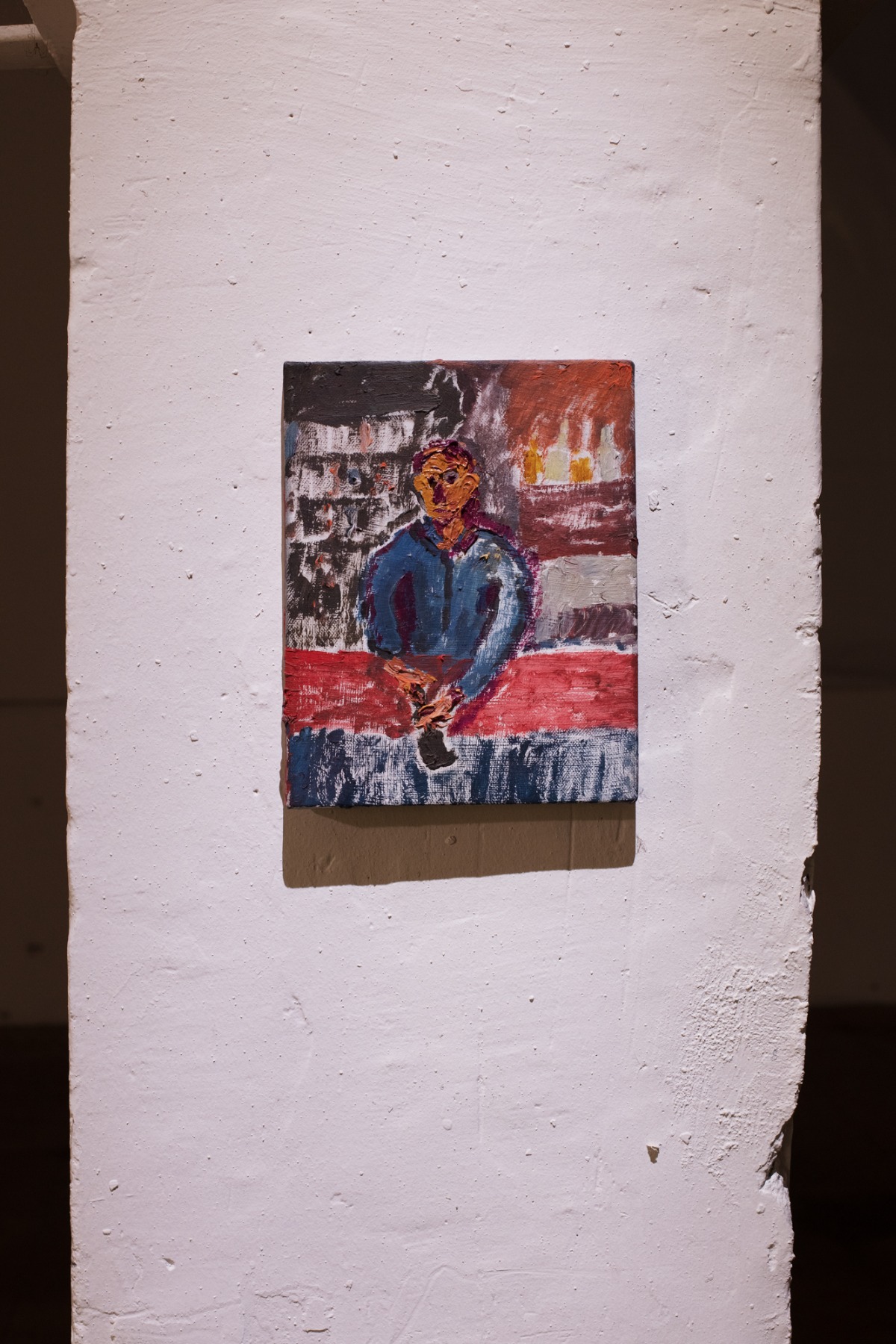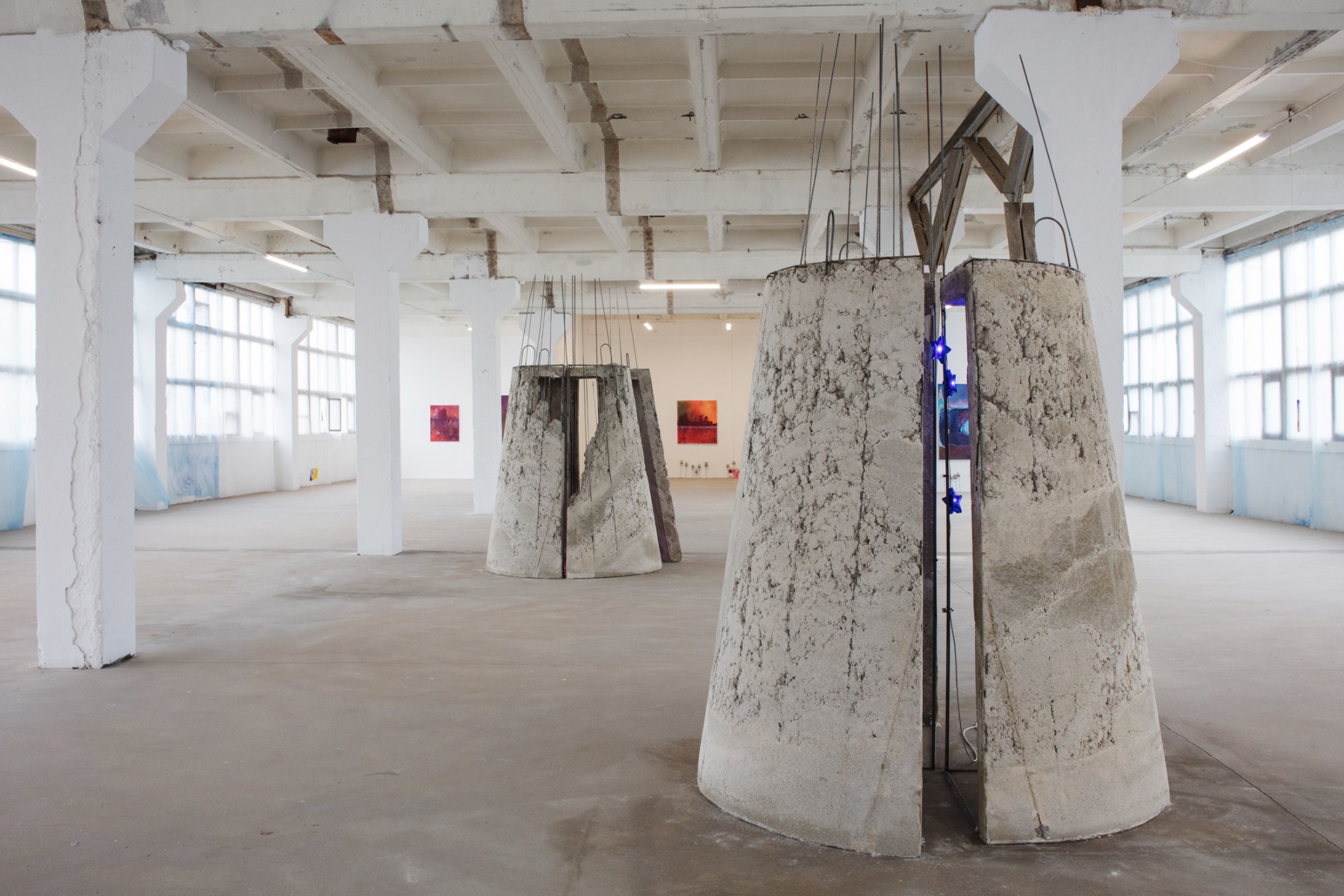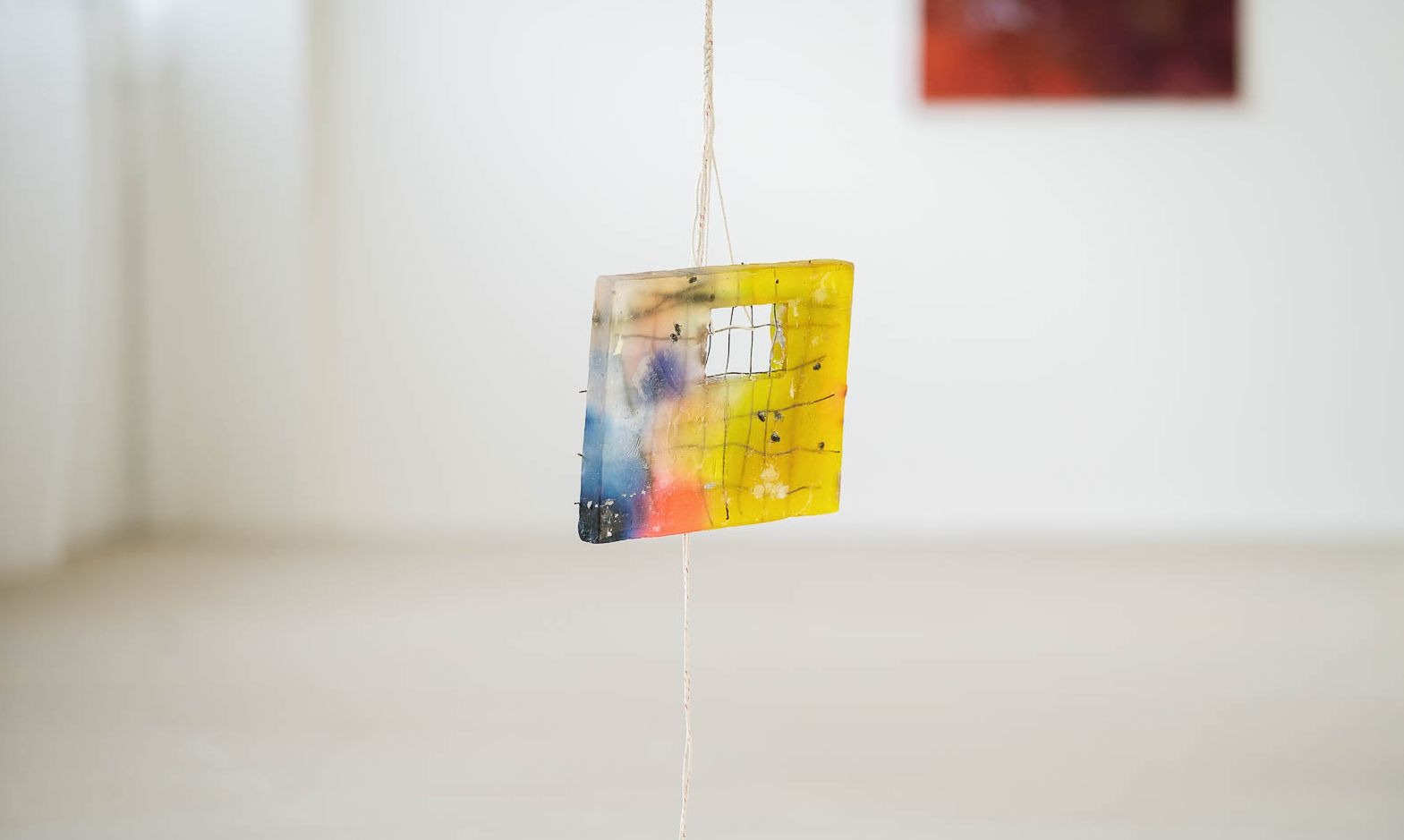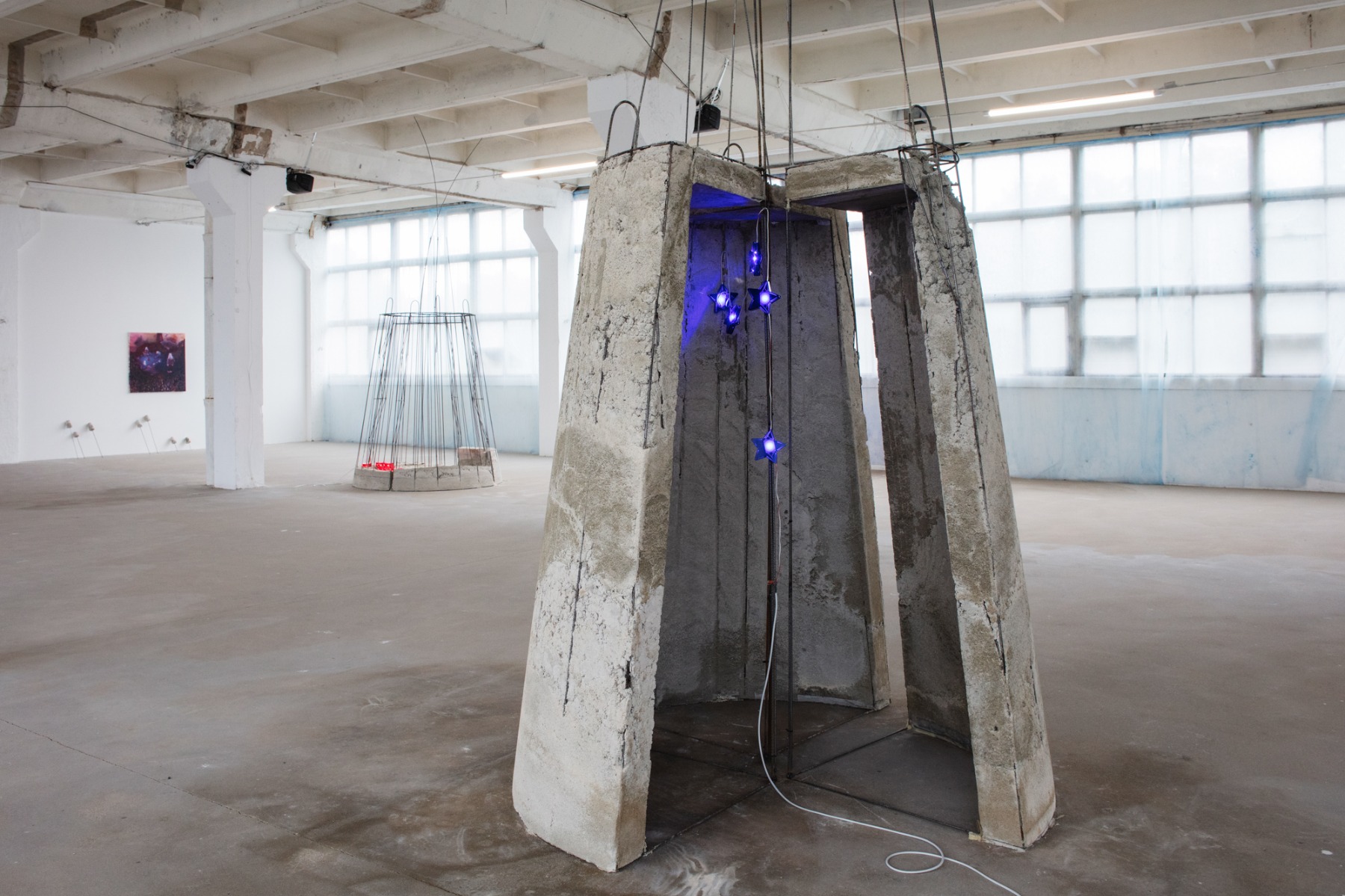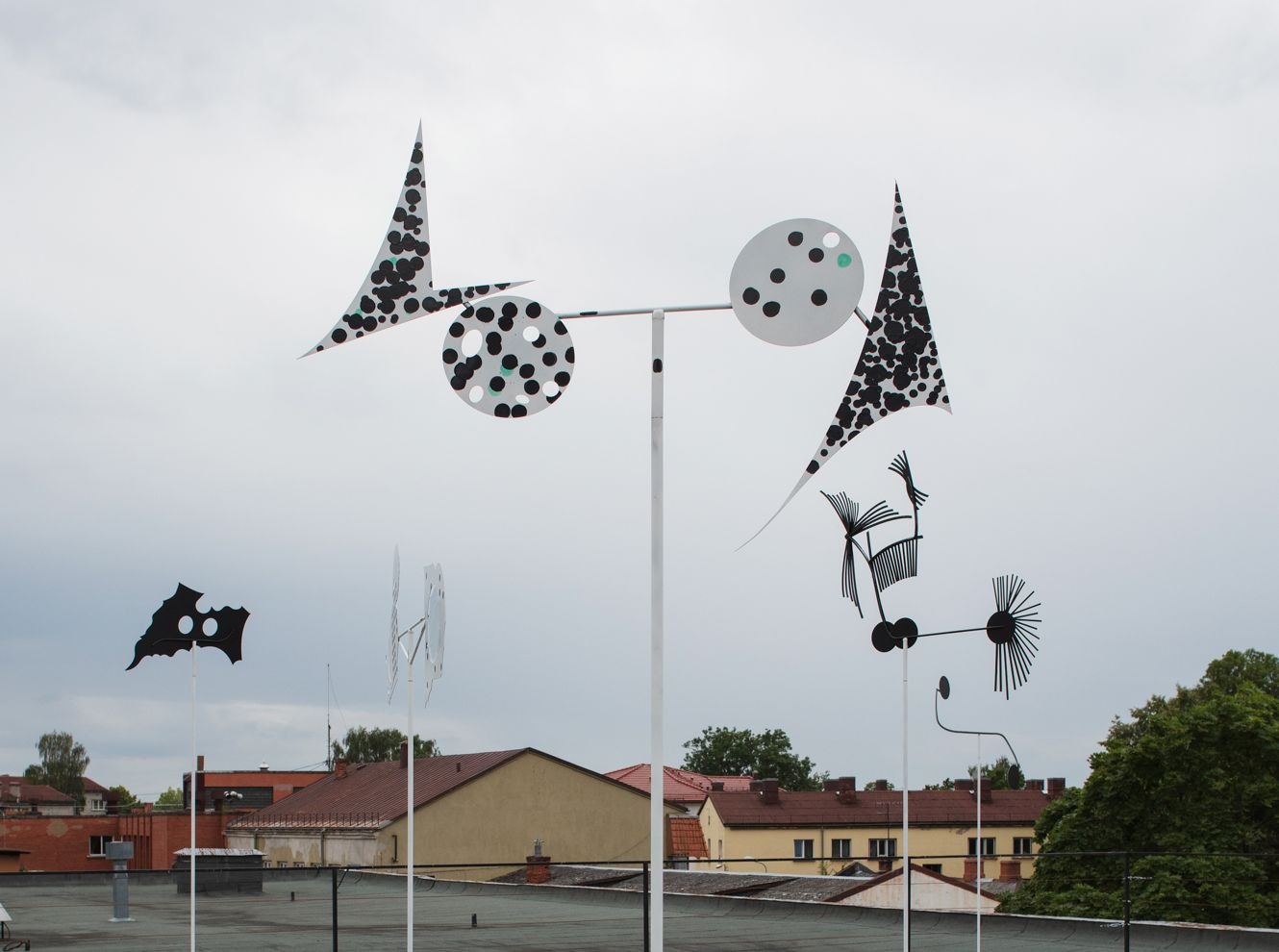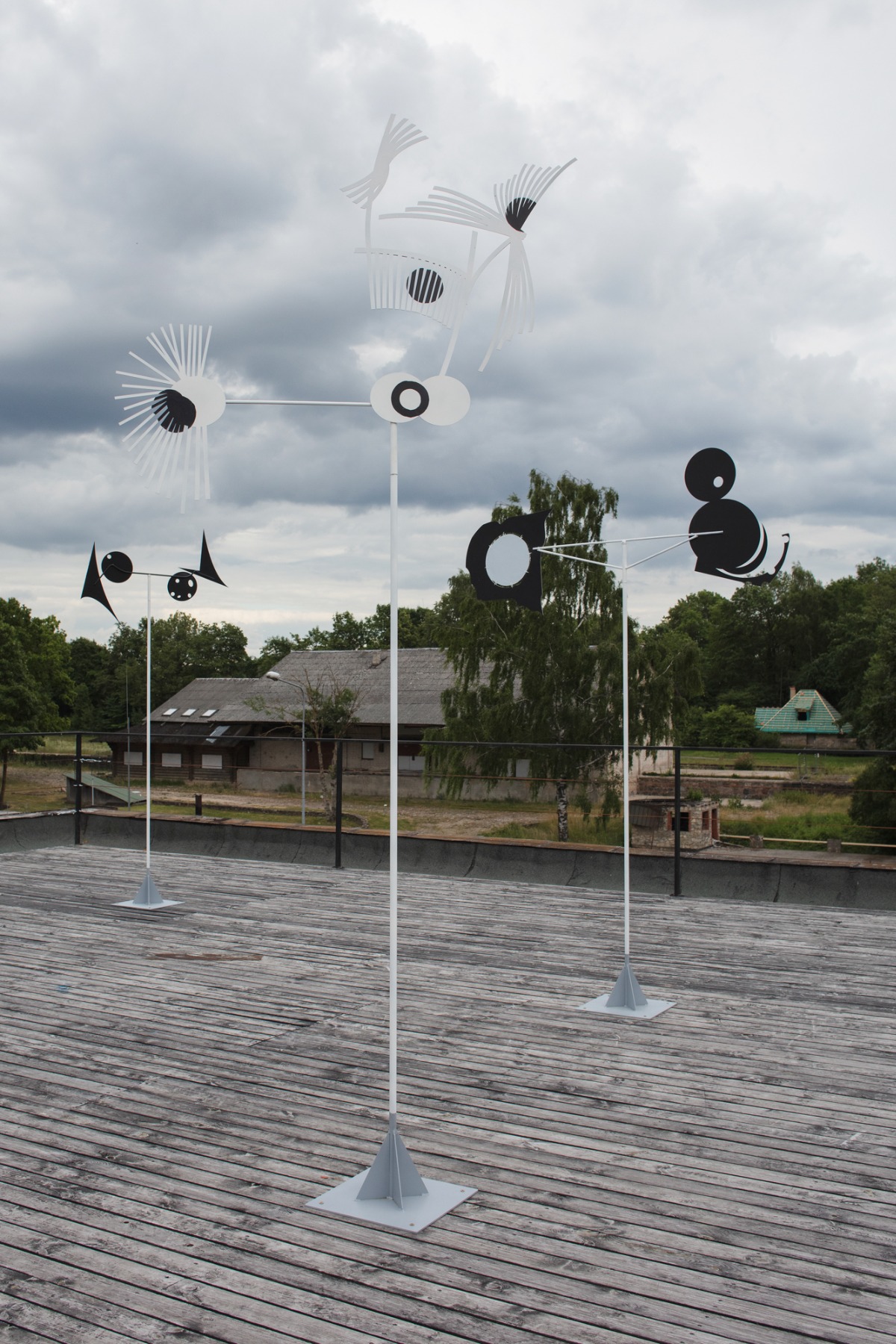
Cēsis Art Festival 2022 presents 3 exhibitions
This summer running from 9 July through 14 August one of the oldest summer festivals in Latvia – Cēsis Art Festival will surprise with an extensive visual arts programme, concerts, an open-air concert, film screenings and theatre performances.
Visual art programme offers three exhibitions – solo exhibition by Dainis Pundurs ‘Waiting For The Beast’ at the Cēsis Concert Hall art gallery, exhibition ‘Bruno Vasiļevskis. P.S.’ at the Cēsis Exhibition Hall and ‘Blue Lagoon House’ by Evita Vasiļjeva and Kaspars Groševs at the Cēsis Centre for Contemporary Art.
Waiting For The Beast
Solo exhibition by Dainis Pundurs
The show is conceived as a staging of past events that never took place. The artist goes back to the roots of aesthetic sensibilities, exploration of form in archaic ceramic vessels, emerging awareness of the concepts of its physical volume and visual capacity. Through interaction with space and events, a ceramic vessel can become a medium, reaching expressive intensity that borders on physically tangible presence.
The process of pottery can be both time-consuming and time-negating, since the geological origin of the ceramic material and its microscopic structure represents an abstraction of pre-civilisation times, compared to which the time spent by the artist on his work is insignificant.
The great beast and a sense of expectation are the mystical theme interweaving the spatiality of the exhibition; it is linked with a past personal experience and some personal myths that are not fully disclosed.
The vessels are shown on the floor level as a feast served to the beast.
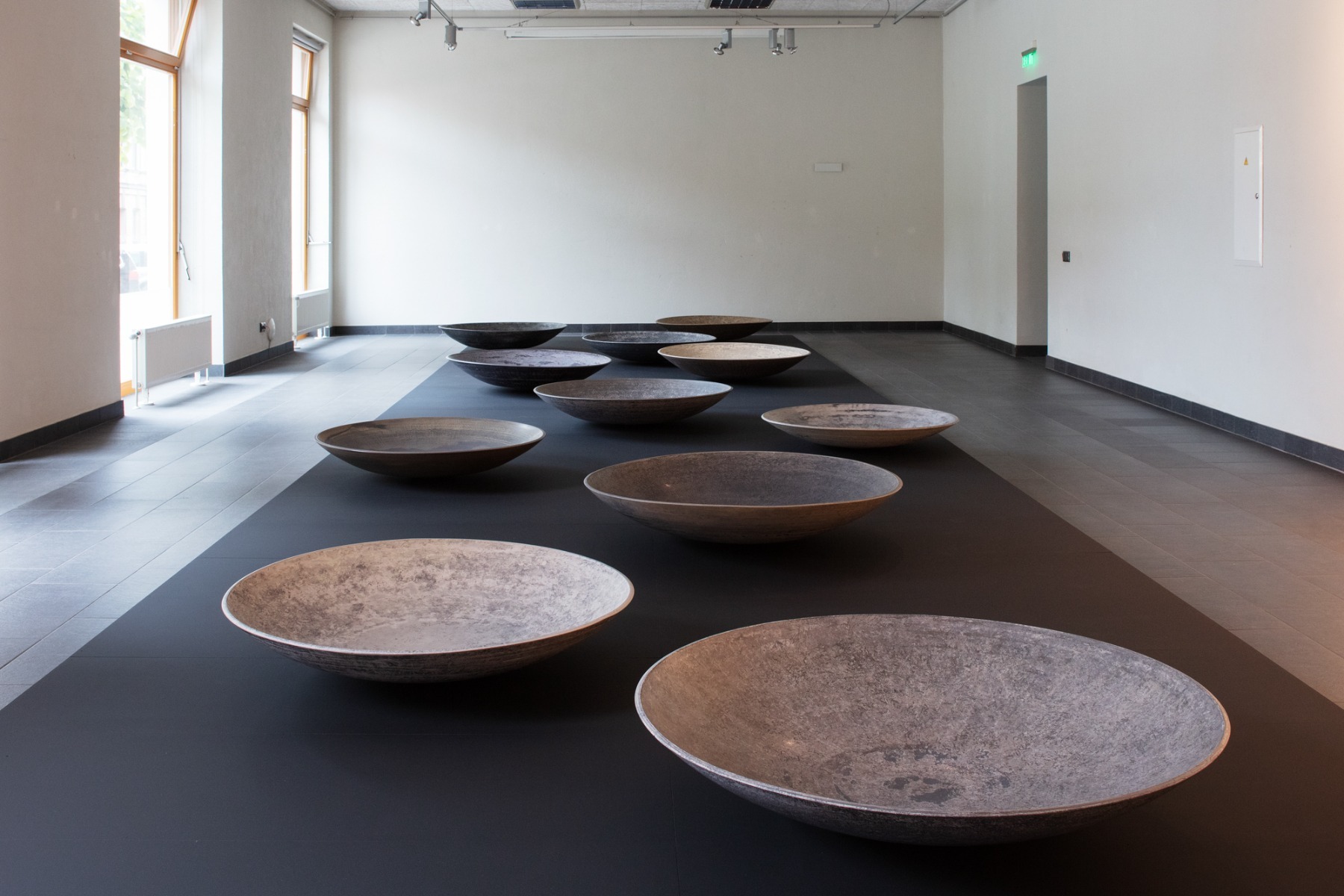



Bruno Vasiļevskis. P.S.
The exhibition ‘Bruno Vasiļevskis. P.S.’ aims to showcase the significant artistic legacy of Bruno Vasiļevskis and outlines ways of viewing it today within a historical and contemporary context. The show comprises three separate sections: ‘Bruno’, introducing the viewer to the personality of the artist and his early forays into art, including the portrait genre; ‘Vasiļevskis’, featuring exclusively still lifes and landscapes dating from the mature stage of his career, and ‘P. S.’, which complements the exhibition, offering a selection of works by artists who could be considered kindred spirits.
The exhibition shows most of Bruno Vasiļevskis’ paintings, as well as some of his drawings and studies. The ‘appendix’ or ‘postscript’ to the show presents a number of works by other artists characterised by an artistically similar approach to the still life, landscape and portrait genres, dating from the time of Vasiļevskis’ life to the present day. Revealing a network of ideas and formal solutions, the show demonstrates the impact of Bruno Vasiļevskis’ art on painting in Latvia. The works on view are on loan from Latvian National Museum of Art, Latvian Artists’ Union and several private collections.
Bruno Vasiļevskis (1939‒1990) was the most prominent Latvian still life painter of the 1970s‒1980s and also made an important contribution to the landscape and portrait genres.
The artist painted on average two works a year, each piece always meeting his own very strict personal standards. A large body of studies and drawings accumulated as part of the process. While Bruno Vasiļevskis’ presence on the Latvian art scene was unobtrusive, the authority he wielded was immense. Vasiļevskis’ time marked a turning point in Latvian art: the lengthy modernist period was followed by a diversity of styles and approaches.
Bruno Vasiļevskis consistently worked only in the genres of still life, landscape and portrait. And yet Vasiļevskis was also a reformer of Latvian art: working in each of the three traditional genres, he introduced a formal language that was opposite to the cult of stylisation and virtuosity that had dominated the previous generation. With Vasiļevskis, a whole new stylistic sub-trend emerged in Latvian art, one defined by faithfulness to observation of nature, a nuanced exploration of light and extremely smooth brushwork. There are a set of Latvian artists who are kindred spirits with Vasiļevskis ‒ different from the mainstream, each with a style of their own yet also sharing some qualities. For this reason, the top floor of the exhibition house is allotted to a selection of works by various artists, which, shown alongside Vasiļevskis’ own paintings, provide some context and clarification, featuring still lifes, landscapes and portraits that are similar in style yet dissimilar in nuances.
Exhibition features works by Bruno Vasiļevskis, Imants Lancmanis, Juris Pudāns, Maija Tabaka, Miervaldis Polis, Līga Purmale, Jānis Krievs, Līvija Endzelīna, Dace Lapiņa, Jānis Blanks, Zane Tuča and Jānis Šneiders. Curator: Vilnis Vējš

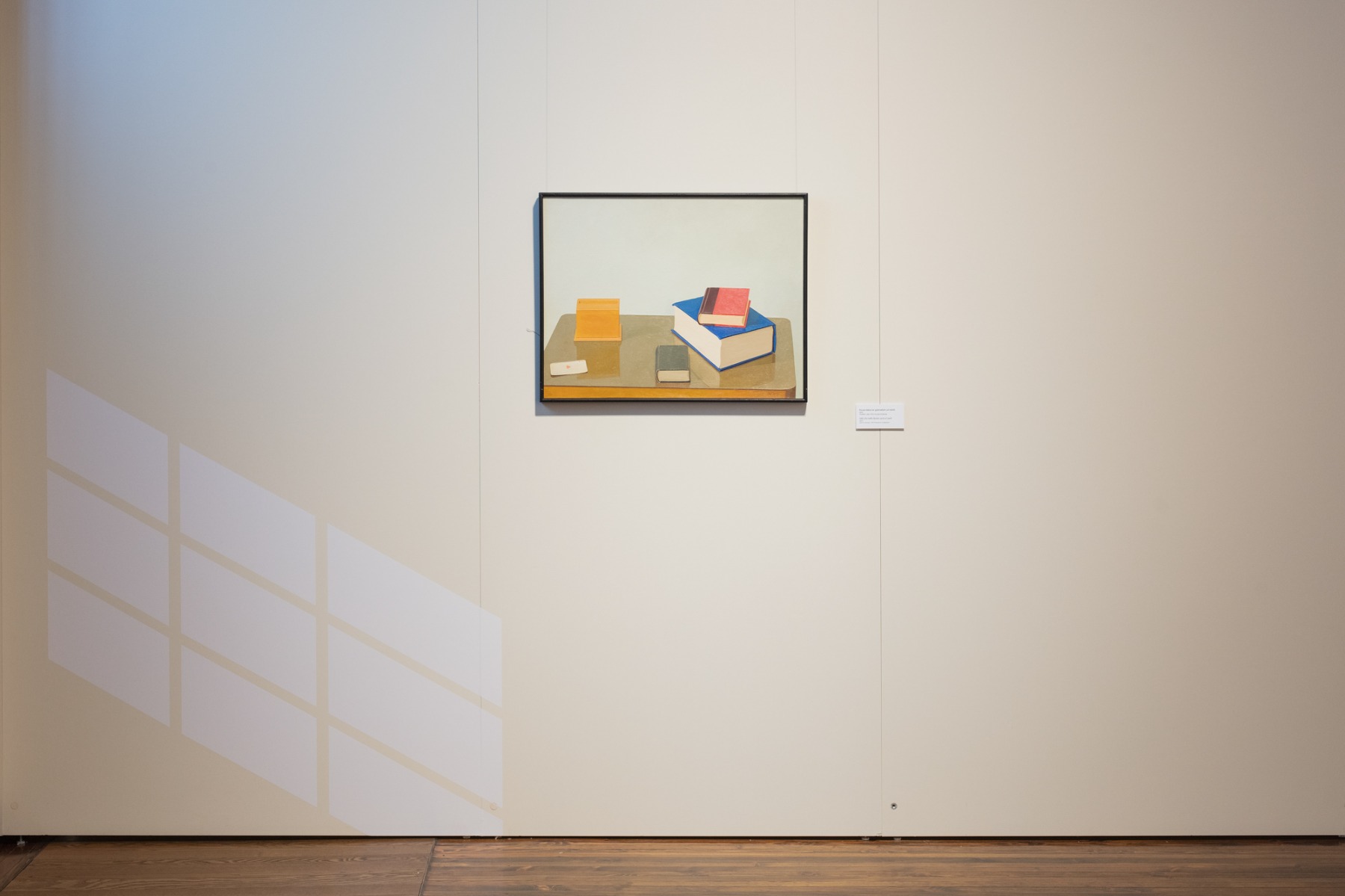
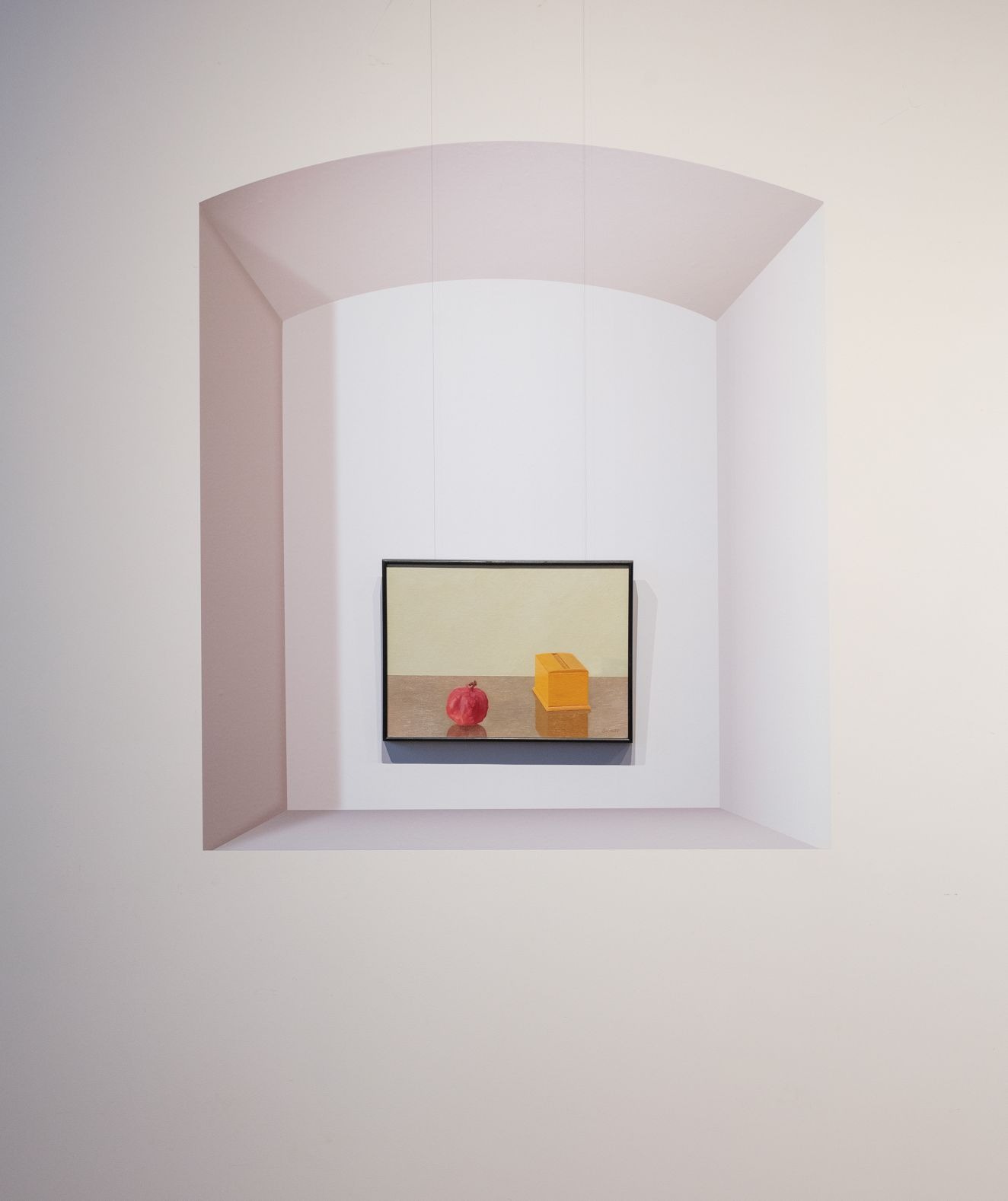
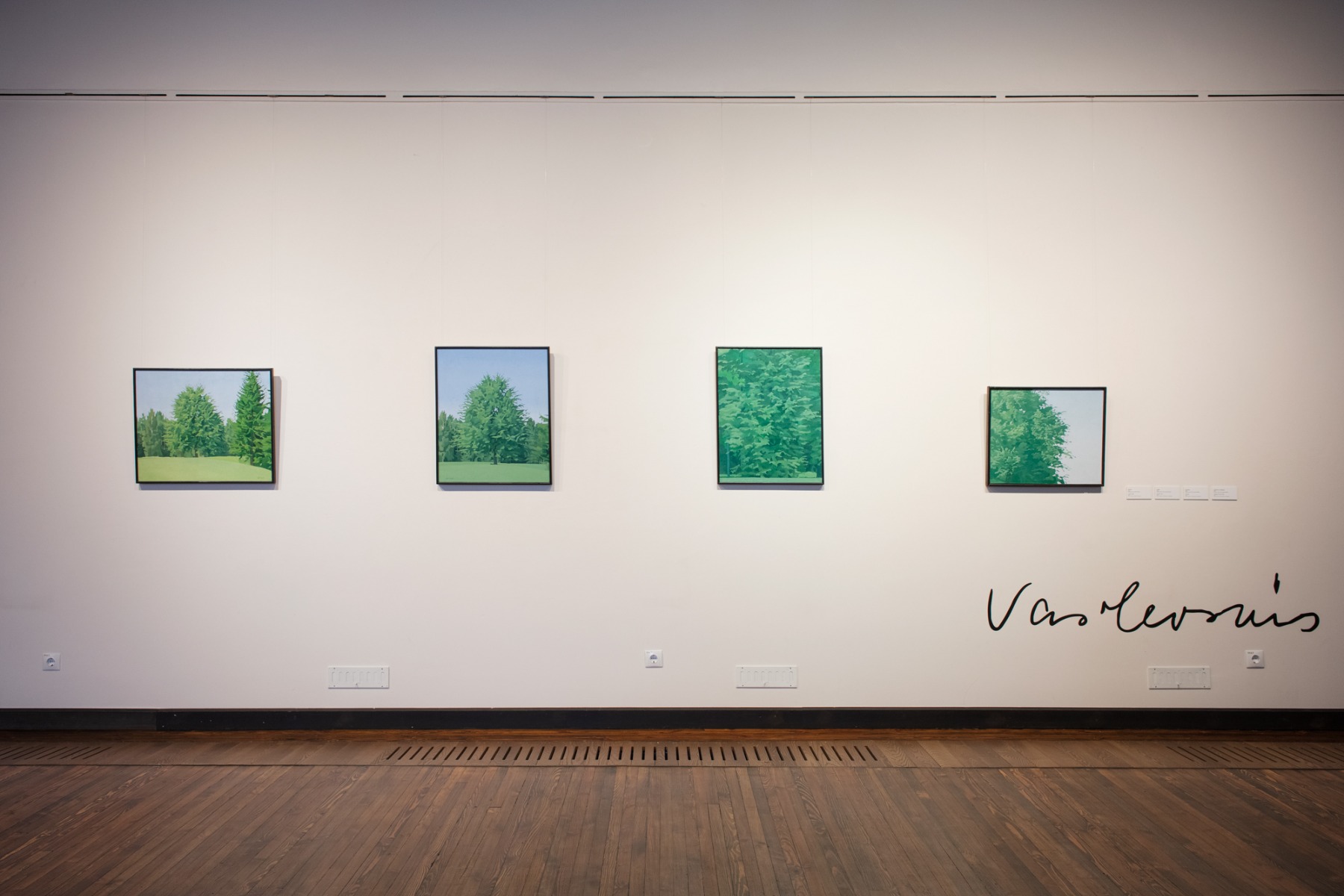


‘Blue Lagoon House’ by Evita Vasiļjeva and Kaspars Groševs
‘Blue Lagoon House’ is a joint project by Evita Vasiļjeva and Kaspars Groševs, combining two different yet also kindred art practices where an essential role is played by the relationship between art works and space and its elements. The project refers to the rich and conceptually packed body of work and activities of NSRD (Nebijušu sajūtu restaurācijas darbnīca ‒ Workshop for the Restoration of Unfelt Feelings) and its idea of ‘approximate art’, transferring Hardijs Lediņš’ drawing of a utopian Pārdaugava landscape entitled ‘Blue Lagoon House’ (1984) to Cēsis and encasing the whole building of the art centre in an immersive and multi-layered installation. Merging the ruggedness of the industrial environment and the installation’s vibrations in space, the artists aim to entwine and set into motion the driving forces of the contemporary and recent art processes that are revealed both in the processuality of the exhibition and in its materials and their interplay ‒ audially and visually. Through layers of light and sound frequencies, the show highlights the individual works by Groševs and Vasiļjeva that share various materialities and their confluence, overlapping, collisions and mirroring, with the gestures by the two artists occasionally resonating and merging.
The exhibition features sculptures, installations, large-scale architectural structures, video works and paintings by Groševs and Vasiļjeva that populate the architecture of the space, woven into a nuanced web of references merging personal and collective histories ‒ lost and found contemporaries, transitional states enveloped by the sound of air currents, meeting places of creative communes, light transitions and their reflection in the lines of the works, seven reasons for sunsets and friction between sound waves. The show reopens the Lagoon kiosk, a project that initially ran in late summer 2021 in Riga, Vagonu Street, and was a collaboration between nine artists, featuring contributions by other creative figures during the opening events.
Participating artists of the Lagoon project were 0.0.1.0.0., Maija Kurševa, Anna Malicka, Dzelde Mierkalne, Luīze Nežberte, Līva Rutmane, $hady Ladies and Klāvs Upaciers, a mixed group of artists representing different generations and sharing an interest in building creative communities around themselves, frequently realising their activities in ways that are somewhat removed from the public eye. Lagoon was the point of intersection for winds blowing from different directions; the same winds permeate the principal exhibition of the ‘Blue Lagoon House’, namely, Groševs’ paintings and Vasiļjeva’s sculptures, but also fuel the air current catchers by the French artist Kamil Bouzoubaa-Grivel on the roof of the art centre building.
The painting series, video work and sound installation by Kaspars Groševs is interspersed with momentary attempts to capture episodes of cultural processes, present and past, dissolved in fragmentary flashes, interrupted words, captured gestures and almost-solved mysteries of lost contemporaries. The interaction between various media also reflects their scale through their relationship and connection with space as the sound inhabits the vast halls, occasionally interplaying with Evita Vasiļjeva’s utopian architectural concrete sculptures, built gradually during the months when the artist lived and worked in Cēsis, using the rooms as a beach of an island, creating her sculptures from bucket-loads of sand, cement and water to the soundtrack of the NSRD records and draught.
In her works, the materials used and the physical process, Vasiļjeva focuses on the transitional state in which the processuality of forms is revealed as existence between emerging, disintegrating or disappearance. Concrete as a material refers to recent past that was known to contain flashes of imagined utopias. Architects of the Bauhaus school imagined an urban environment adapted to utilitarian needs ‒ bringing light to workplaces and living quarters. Factories were transformed into ‘cathedrals of work’. Re-enforced with iron rods, open concrete became the fundamental element of early 20th-century avant-garde architecture and has largely retained its significance to date. Combined with other materials, in Vasiļjeva’s work it obtains its form through their weight and plasticity. The large-scale concrete sculptures are complemented by cast lamps in which glass is replaced with melted and moulded soap ‒ the series ‘Seven Reasons to Spend Time for Sunsets’, a reflection of the rhythms of time and the hypnotic nature of the sun.





